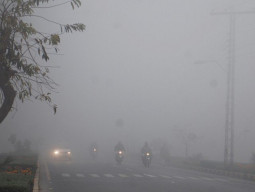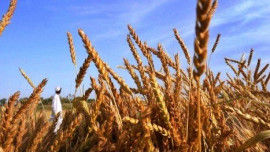
According to seasonal awareness and alert for epidemic-prone infectious diseases in Pakistan issued by NIH for the winter season, the authority said that such plans will be helpful in controlling outbreaks and reduce the associated morbidity and mortality.
The NIH advised the federal, provincial and district health departments as well as other stakeholders to keep watch on the anticipated seasonal public health threats and take all preventive or curative measures in this context.
It asked the authorities concerned to properly read the NIH alert which contains a detailed introduction of diseases, case definitions, infectious agents, modes of transmission, case management and prevention.
It said that in Pakistan, the influenza activity typically starts increasing from September and reaches its peak during the winter months and asked clinicians to remain meticulous and treat all suspected cases of severe influenza appropriately.
It said that influenza is a contagious respiratory illness caused by influenza virus and it can cause mild to severe illness and older people, young children and people with certain health conditions are at high risk of serious complications.
It said that there are three types of seasonal influenza viruses, types A, B, and C.
The NIH alert said that diphtheria is also a disease of prevailing season which is an acute, toxin-mediated Vaccine-Preventable (VPD) upper respiratory illness that affects the throat and sometimes tonsils.
It said that diphtheria causes a thick covering in the back of the throat and can involve almost any mucous membrane.
Classifications based on site of the disease are an anterior nasal, pharyngeal, tonsillar and laryngeal membrane, sore throat, low-grade fever and an adherent pseudo-membrane on the tonsils, pharynx and nasal cavity.
It added the symptoms range from sore throat to toxic life-threatening diphtheria of the larynx or of the lower and upper respiratory tracts.
The toxin produced by bacteria may also get into the bloodstream and can cause damage to the heart, kidneys, and nerves.
The alert said that dengue is a mosquito-borne viral disease which is also known as break-bone fever, causes a flu-like illness, and occasionally develops into a potentially lethal complication.
It said that the global incidence of dengue has grown dramatically in recent decades and about half of the world's population is now at risk.
The first outbreak of dengue fever in Pakistan was confirmed in 1994, but a sudden rise in dengue cases and the annual epidemic trend in the provinces has been observed multiple times thereafter.
It said that dengue fever is defined by fever for three days to 10 days as reported by the patient or healthcare provider and the presence of one or more signs and symptoms like nausea, vomiting, rash, aches, headache and leucopenia.
Published in The Express Tribune, October 9th, 2019.
































1714024018-0/ModiLara-(1)1714024018-0-270x192.webp)








COMMENTS
Comments are moderated and generally will be posted if they are on-topic and not abusive.
For more information, please see our Comments FAQ